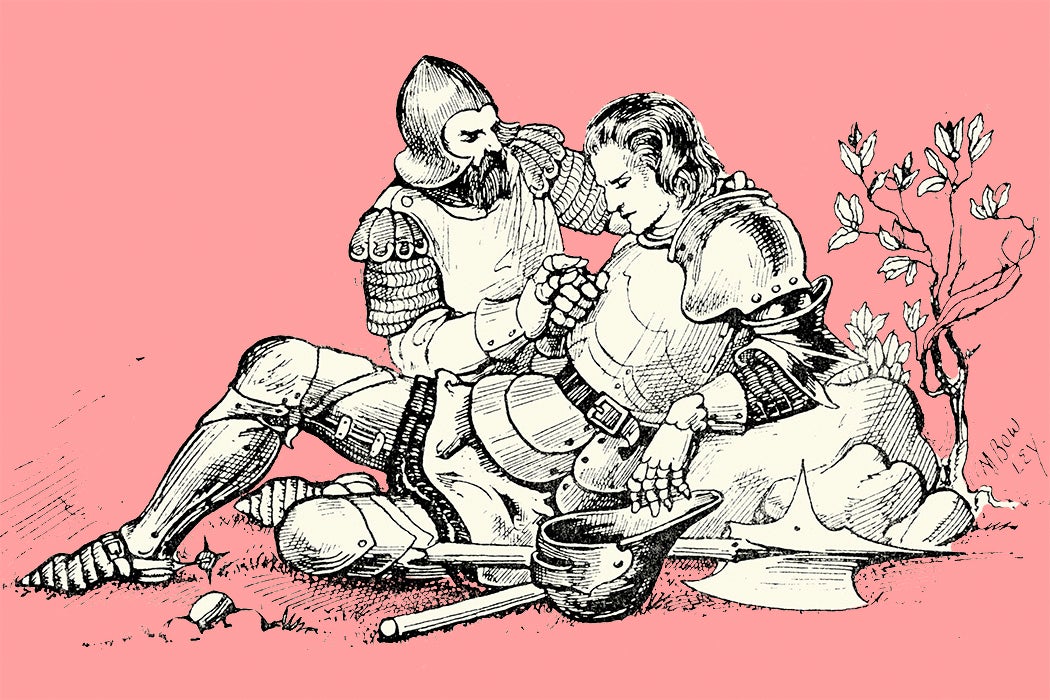“Swooning” is a word we mostly associate with delicate femininity—Victorian ladies fainting away due to their physical and mental frailty, perhaps. But, as historian Rachel E. Moss writes, in Middle English romances from the late medieval period, it was frequently the strongest and most noble knights who were so overcome with emotion that they collapsed.
In the fourteenth-century romance called the Stanzaic Morte Arthur, a minor character named Mador learns of his brother’s death, and Queen Guinevere’s possible role in it, when he stumbles on his tomb in a forest. Upon seeing the tomb, Mador is so overcome with emotion that he collapses. Moss writes that the author described Mador’s swoon as a shorthand to establish his worthy character and make it clear that his subsequent quest for justice was well intended.
“Mador does not faint in spite of his knightly qualities of hardiness, strength and prowess,” she writes. “He faints because of them.”
Moss writes that swooning had a variety of meanings for medieval authors, depending partly on the gender of the person doing it. Frequently, it reflected emotional ties between men. In Sir Degaré, written in the early fourteenth century, the title character takes on a long quest to find his father, whom he never knew. After a fierce battle with a strange knight, both combatants are exhausted when Degaré pulls out a broken sword. The other man recognizes from the weapon that he was fighting his son, and both collapse to the ground. Moss notes that this is a scene of greater emotional intensity than the story’s romantic moments.
“Degaré swoons because he is overwhelmed, as he has finally found the father for whom he has been searching all his adult life, and also because he is guilt-ridden, knowing that he could have killed his father,” she writes.
In Thomas Mallory’s fifteenth-century Le Morte d’Arthur, when King Arthur learns that Lancelot has killed two of his nephews, he collapses. The dead men’s brother, Sir Gawain, then arrives and also swoons when he hears the news, after which the two men weep together and collapse again.
“To the modern reader this might sound almost farcical,” Moss writes, “But there is certainly no sense in the text that this is in any way funny.”
Weekly Newsletter
She adds that modern notions of manhood might call for men to “buck each other up,” but that would have made no sense to medieval readers, who viewed intense emotion as an innate part of elite masculinity.
“Seeing each other’s grief reminds them of their own, mirroring and magnifying it so that the only appropriate emotional response is to pass out,” Moss writes. “A hero’s sorrow is ideally expressed to the full through the mechanism of sharing it with someone who understands his grief. Anything less would not be a fitting tribute to those he has lost.”
Support JSTOR Daily! Join our membership program on Patreon today.







